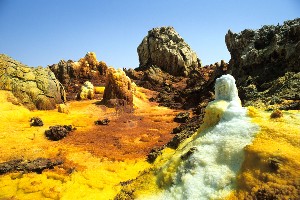
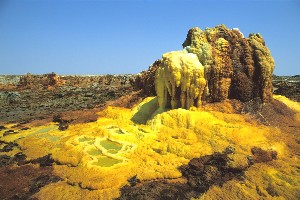
Hot Springs on Dallol Mountain, 2002
Large hot spring on Dallol Mountain, 2002
 |
 |
Hot Springs on Dallol Mountain, 2002 |
Large hot spring on Dallol Mountain, 2002 |
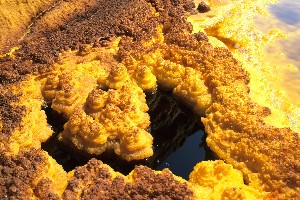 |
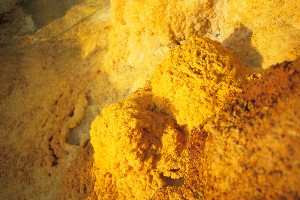 |
Hot Spring Deposits, Dallol Mountain, 2002 |
Hot Spring Deposits, Dallol Mountain, 2002 |
|
Hot Springs on Dallol Mountain, 2008 |
Hot Springs on Dallol Mountain, 2008 |
Hot Springs on Dallol Mountain, 2008 |
|
Hot Springs on Dallol Mountain, 2008 |
Hot Springs on Dallol Mountain, 2008 |
|
Worker shapes halite slabs. |
Slabs of halite cut out of surface crust. |
Camel being loaded with halite slabs |
|
View from Black Mountain over 1926 crater to Dallol mountain |
As left picture but abandoned car better visible |
Remains of hot spring with Black Mountain on left and Dallol Mountain in background |
|
Presumably a deposit formed by rapid evaporation of a high salinity hot spring overflow near Black Mountain |
|
Cluster of tiny hot springs (2008) |
Hot springs (2008) |
Water jetting out of small hot spring by pool (2008) |
|
Active hot spring about 1m high (2008) |
Tiny hot spring (2008) |
Kettle-shaped hot spring (2008) |
|
Greenish pool with salt crystallizing on surface as temperature drops in late afternoon |
Yellow pool with salt crystallizing on surface as temperature drops in late afternoon |
|
Yellow salt crystals deposited by hot springs (2008) |
Yellow and White salt crystals deposited by hot springs (2008) |
|
Tiny salt pillar standing out of hot spring deposits (2008) |
Yellow salt crystals deposited by hot springs (2008) |
|
Egg-shaped fumarolic deposits, Dallol, 2008. |
|
Dallol salt canyons viewed from the base of Dallol Mountain |
Salt pinnacles with local Afar for scale |
30m high salt blocks spread over a wide area |
|
Geyser on island in "Yellow Lake" |
One of several zones of upwelling exposing yellow colouration |
|
Salt crust at side of spring near "Yellow Lake" |
Tiny geyser at edge of "Yellow Lake" |
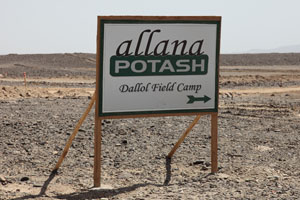 |
|
By 2011, 4 companies, including Allana, were active doing exploratory activity in the Dallol area |
|
Boiler of old 440 class locomotive. Maybe used to power mine machinery ? |
Remains of Fiat truck from Italian era |
Boilers of unknown function with Dallol Mountain crater behind. |
|
Remains of Fiat car amongst houses made of salt blocks |
Walls of house made of salt blocks |
|
Remains of salt-block dwellings with more modern buildings in background |
Dallol main road - White buildings were presumably erected by Parsons in the 1960s |
|
Old 4WD vehicle - Remnant of 1960s Parsons exploration work at Dallol village |
Remnants of 1960s Parsons field camp, Dallol Village |
|
Rusting vehicles abandoned in 1960s |
Fuel tanks abandoned in 1960s |
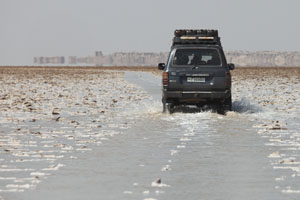 |
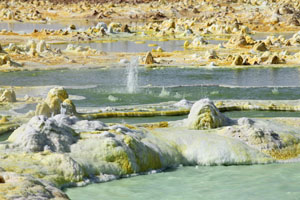 |
|
Flooded salt lake surrounding Dallol resulting from high precipitation in nearby mountains |
Small geyser in hydrothermal pool |
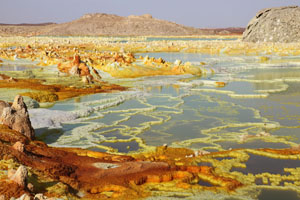 |
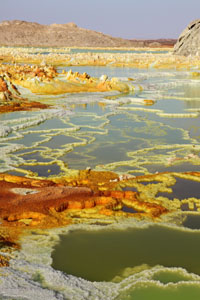 |
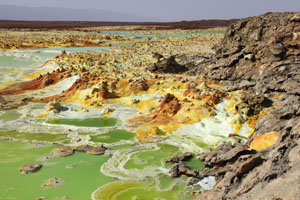 |
|
Dallol Hot Springs, 2011 |
Dallol Hot Springs, 2011 |
Dallol Hot Springs, 2011 |
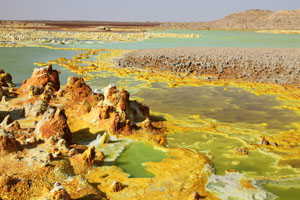 |
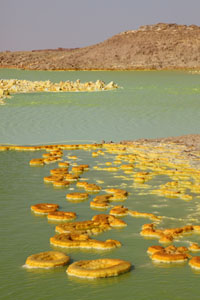 |
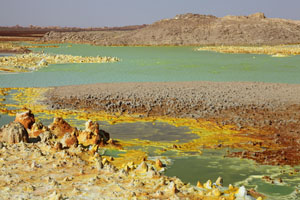 |
|
Dallol Hot Springs, 2011 |
Dallol Hot Springs, 2011 |
Dallol Hot Springs, 2011 |
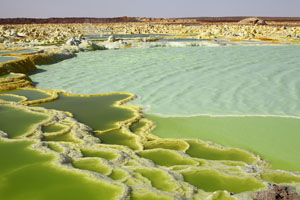 |
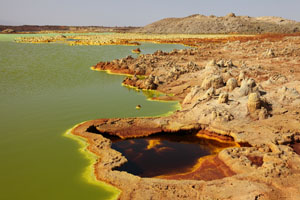 |
|
Dallol Hot Springs, 2011 |
Dallol Hot Springs, 2011 |
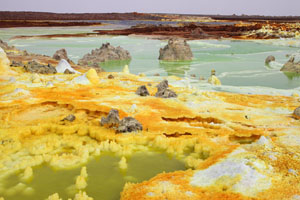 |
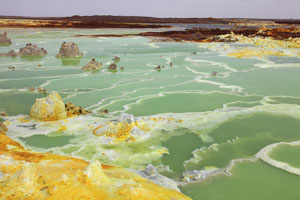 |
|
Dallol Hot Springs, 2011 |
Dallol Hot Springs, 2011 |
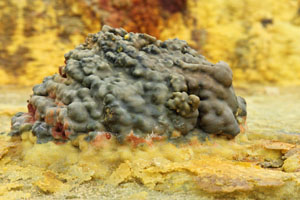 |
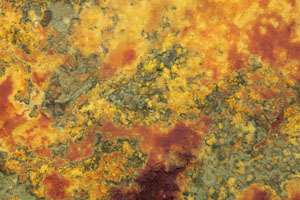 |
|
Small green hot spring deposit |
Spring deposits including green coloration |
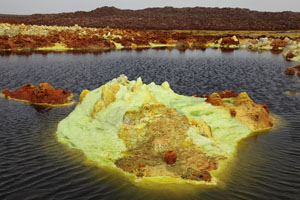 |
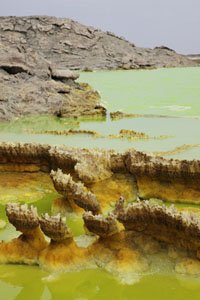 |
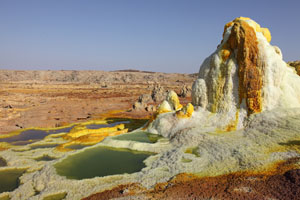 |
|
Dallol Hot Springs, 2011 |
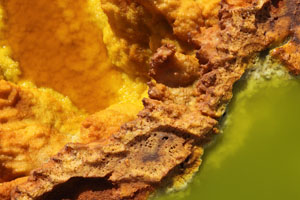 |
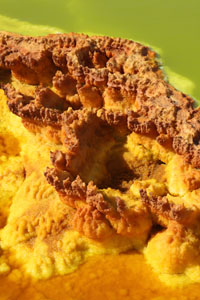 |
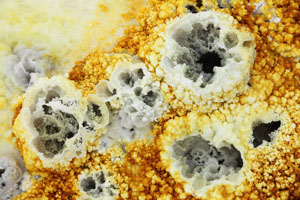 |
|
Dallol Hot Spring Deposits |
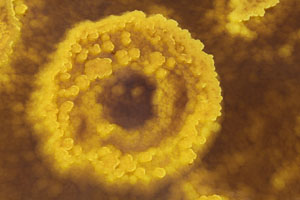 |
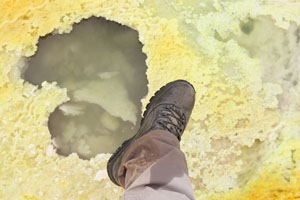 |
|
Dallol Hot Springs, 2011 |
Brittle crust may break in places |
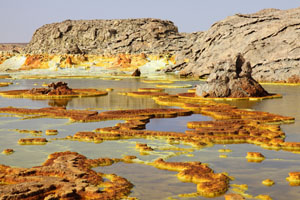 |
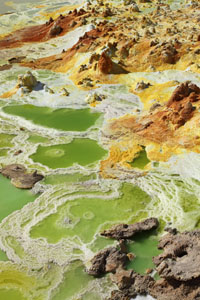 |
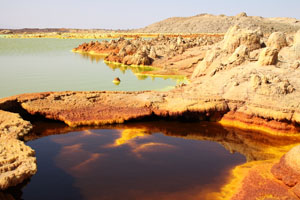 |
|
Dallol Hot Springs, 2011 |
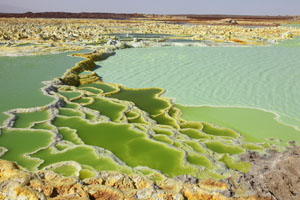 |
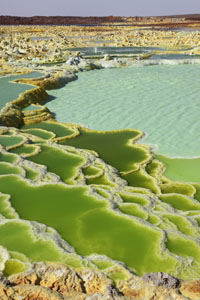 |
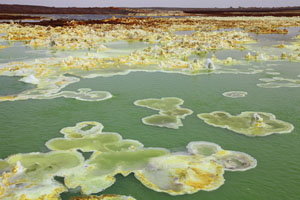 |
|
Dallol Hot Springs, 2011 |
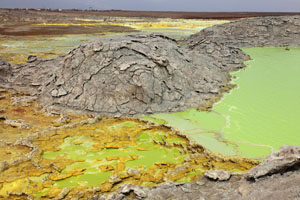 |
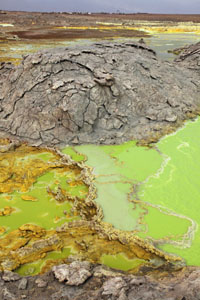 |
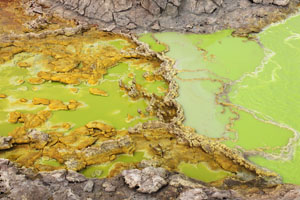 |
|
Dallol Hot Springs, 2011 |